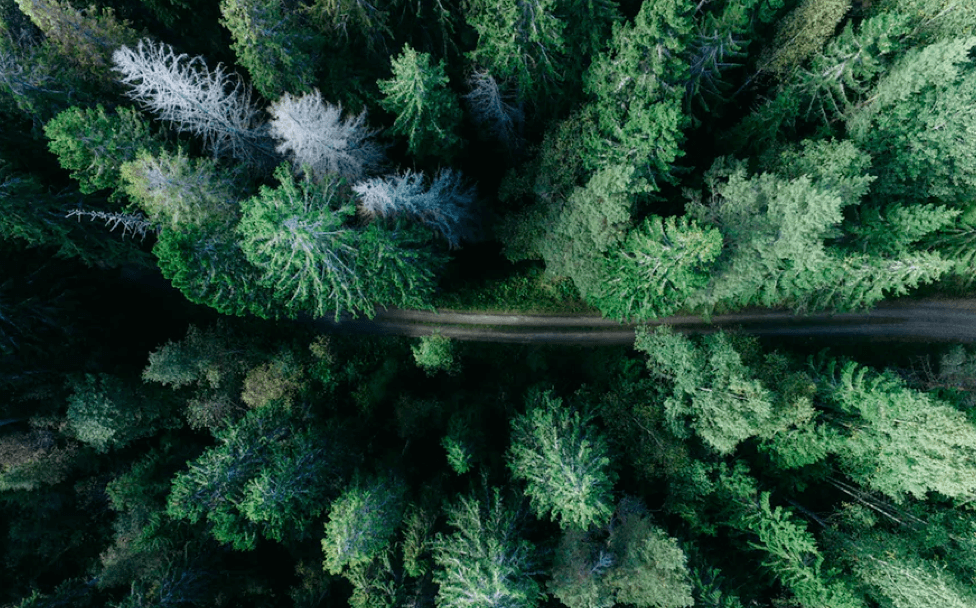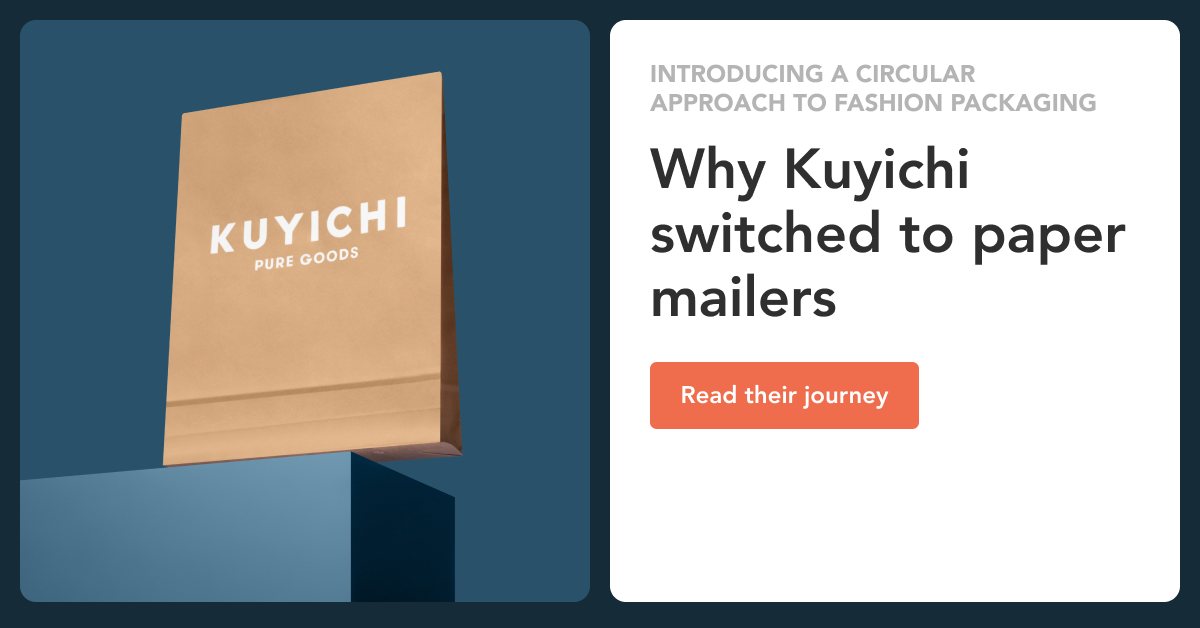The Importance of Conducting Packaging LCA


Subscribe now! Receive 15% discount.
Don’t miss out – get 15% off your first order when you join the newsletter. It’s fast, free, and kinda smart.
You're now subscribed!
In this article:
Flexible packaging for keeping food fresh, bespoke letter boxes for unique gifts, QR codes linking to set-up tutorials – product packaging is becoming increasingly innovative as brands try to create a memorable first impression with customers.
But with plastic production, use, and disposal contributing around 1.8 billion tonnes of carbon emissions per year, wasteful packaging has a lot to answer for.
Billions of pounds of plastic are decimating our oceans and marine life. At current rates, it’s said that plastic will outweigh all fish in the sea by 2050.
Good packaging gets the item to its desired location in one piece.
Great packaging does this while considering its impact on the environment once it's been ripped open and discarded.
Encouraging packaging design that is as eco-responsible as possible throughout its lifecycle gets us one step closer to the ultimate goal of reducing waste and giving single-use products a second lease of life.
Have you ever considered the environmental impact of your product packaging? Or wondered how much energy was used to create it in the first place? This is where conducting a packaging life cycle assessment (LCA) comes in.

In this article, we'll explore the importance of conducting packaging LCA.
We'll also cover:
- The stages of the packaging life cycle
- Benefits of packaging LCA
- Crucial LCA tools and software for the packaging industry
But first, what even is a life cycle assessment?
What is a life cycle assessment?
A life cycle assessment provides a standardised approach to analysing a product’s environmental impact throughout its “life”. That includes the time a product is produced, transported, used, and discarded – essentially, its life cycle from source to shelf.
The assessment process takes into account everything from the materials used to the energy needed to create or use the product, analysing different aspects at each stage (more on this later).
For this reason, it’s also known as a “cradle-to-grave” analysis.
In this way, an LCA goes much deeper than simply considering the time a product reaches a customer until they throw it away.

Think about the life cycle of a cell phone. The fibreglass and chips it is made with, its projected lifespan, and the energy for charging it are all part of its lifecycle. So each of these elements should be considered when conducting an LCA.
But why conduct an LCA in the first place? The idea is to identify areas for improvement.
Through the process, you’ll gather data to help make tailored recommendations like using more energy-efficient alternatives to plastic or buying local materials to reduce carbon emissions during the transport phase.
This process is just as relevant to your packaging as the products themselves.
Everyone from supply chain managers to business owners can evaluate the environmental footprint packaging has over its lifetime. You can then use the information to make informed decisions that will reduce the impact of your packaging.
What are the benefits of packaging LCA?
Businesses today are always looking for new ways to perfect their brand image, improve the customer experience, and ultimately increase sales.
To stand out from competitors, you might have gone high-tech with software like workforce management from Paylocity, inventory management from Sortly, or order management from Jotform.
Analysing your packaging may be at the bottom of the list, but it shouldn’t be.
Research from McKinsey shows that over 60% of consumers are willing to pay more for a product with sustainable packaging.
So if you understand the impact of your packaging, you can shout about its green credentials from the rooftops while increasing sales, brand reputation, and customer satisfaction.
Not convinced? Let’s look at some other benefits of conducting packaging LCA:
- Analyse your environmental impact: Identify energy consumption, resource-intensive materials, and excess waste throughout the packaging process, from source to shelf.
- Get accurate recommendations: Pinpoint where improvements need to be made through tailored recommendations. This might be reducing CO2 emissions during manufacturing or using more eco-friendly packaging materials when shipping products to customers.
- Demonstrate your values: Show you care about the planet, are socially responsible, and your brand is committed to sustainability in every way.
- Increase trust: After an assessment, you can find independent certifications from publicly funded organisations like The Carbon Trust. This builds credibility and confidence with customers.
- Be proactive: Prepare packaging design for future regulatory changes around recycling or waste restrictions.
Stages of packaging life cycle
There are 5 crucial stages of the packaging life cycle. Each of these goes hand-in-hand with the 5 Rs of sustainable packaging:
reuse, reduce, recycle, renew, and redesign.
Many modern businesses look to simplify different stages of business processes from the online customer journey to payroll for small business employees. Either way, the idea is to identify different steps involved, be aware of how they impact one another, and tweak them for a better end result.
It’s just as important to understand the stages of a packaging life cycle.
After all, packaging isn’t an afterthought; it can (and should) be a crucial part of your marketing strategy. So it’s important to understand the impact it has.
By collecting and analysing data from each stage of the packaging life cycle, you simplify the process of finding the environmental impact of every material and method used in its manufacturing.
So let’s explore each stage in more detail.
Resources extraction
The first stage of packaging production involves extracting raw materials from the earth. Examples include drilling for oil to create plastic packaging, mining ore for aluminium bottles, and felling trees for paper and cardboard boxes.
At this stage, ask yourself: How can we reduce resource use and raw material extraction?

Material processing & product manufacturing
Before packaging can be manufactured, raw materials require extra processing.
Once it has been processed, the packaging can be shaped, cut and wrapped around the product. For example, to manufacture aluminium containers, an impact extrusion process is used.
At this stage, think about what the product's carbon footprint is and how it can be reduced.
Distribution
The distribution stage covers how the packaging is transported to retailers and customers.
What are your current transport emissions and how can they be reduced? How can you improve packaging design to make products easier to distribute?
This stage has led numerous new businesses and product lines to emerge in recent years.
Brands like Blueland, Neat, and Bower Collective realised the detrimental impact of plastic packaging used for cleaning products like hand soaps and cleaning sprays. With the majority of the product and packaging weight coming from water, the refill revolution took over.
Savvy eco-consumers have never looked back!

Retail & usage
This stage covers how the packaging is stored and used.
For example, how much energy and water is needed to store the items by retailers and customers? How can you make your packaging easier to store?
No more renting extra storage space and constant reordering - we'll store your excess packaging and send it to you when you need it. Learn more
Waste disposal
The final stage focuses on the final destination (end-of-life) of packaging. Can the packaging be reused? Is it easy to recycle?
4 steps of the LCA methodology
The International Organisation for Standardisation (ISO) specifies the steps you should take when undertaking an LCA. The main aim is reliability and transparency, so keep these in mind as you go along.

1. Goal and scope definition
First of all, define your LCA goals and craft a study with the scope to achieve them. For example, your goal might be to understand the impact of your brand’s shampoo bottles.
Here’s a little checklist of things to ask yourself (and develop clear answers to) at this point:
- Why are you conducting the LCA?
- How do you intend to use the results?
- Who is the study aimed at – package designers, senior decision makers, customers?
This stage is crucial, so don’t skip it.
If you were looking to improve customer satisfaction levels with your customer support team, you would need an obvious starting point. Without a clear aim, you wouldn’t know whether to analyse how you transfer calls or the time it takes your team to solve customer issues.
These will impact what data you need to gather during later stages of the process.
So similarly, you need to define your packaging LCA objectives clearly, otherwise, you’ll have no clear path for collecting relevant information that will lead you to your goal.
2. Inventory analysis
The inventory analysis examines the environmental inputs and outputs associated with the packaging. This might include raw materials and energy used, emissions, and waste streams.
During this stage, you should:
- Create a flow diagram of the assessment process to help you visualise it.
- Identify the types and sources of data and information you’ll need.
- Determine your calculation procedures.

3. Impact assessment
The impact assessment draws conclusions to help you make better decisions. Look at the most effective methods to address your audience and present a set of detailed results.
Consider the following steps:
- Create a report of your results.
- Detail any additional information such as delayed emissions.
- Include production, delivery, fuel, and other energies.
4. Interpretation
The last step checks if your conclusions are valid and based on facts. Examples of this are on-site checking, re-calculation, and independent verification methods.
Ask yourself:
- Is the study complete and consistent?
- Did you consider any data anomalies?
- What are your final conclusions, limitations, and recommendations?
LCA tools and software for the packaging industry
There are various tools to support your LCA studies. For example, you might use time management software to track hours spent conducting the assessment. This will help you budget for future assessments on other types of packaging your business uses.
For effective data collection, calculation, and reporting, here are a handful of helpful LCA tools.

Carbon footprint calculator
A carbon footprint indicates how much greenhouse gas is emitted from a particular action, product, company, or community. They can calculate daily, monthly, and yearly amounts of carbon emissions created by companies.
To calculate your packaging emissions, you’ll need to know the generated greenhouse gasses used in raw materials manufacturing, packaging system fabrication, total annual mileage for transport of materials, and reuse, refurbishment, and disposal statistics.
As well as online carbon footprint calculators, you can also use emissions management software.
Remote access tools
Modern tools like remote desktop for Android from RealVNC allow users to connect with desktop computers and access essential files no matter where they're based.
Whether you’re a designer, business owner, or supply chain manager, you can use these tools to create remote learning opportunities to train employees on life cycle assessment best practices and more.
Life cycle assessment software
Digital LCA software can be useful for gathering large amounts of data, creating user-friendly databases, and embracing sustainable product and packaging design.
There are various LCA software options. For example, Ecochain Helix helps manufacturing companies measure and improve the environmental footprint of complete portfolios and large-scale packaging production facilities.
OpenLCA is another option. Billed as the only free LCA software available, the open-source software can be used for professional ecological, social and economic life cycle assessments.
Sustainable packaging fails: what not to do
An effective LCA quantifies the environmental impact of your packaging. Some will be more obvious than others, though these packaging fails show not every decision is common sense!
The worst thing since sliced bread?
Individually wrapped slices. Please no. (Hotel in Romulus/Detroit, MI)
byu/IamRasters inmildlyinfuriating
This packaging probably costs more than the bread itself. Implementing an effective LCA will help avoid unnecessary waste and reduce costs.
Whose bright idea was this?
View this post on Instagram
There has to be a smarter way of wrapping eco-friendly light bulbs. Even if the packaging can be recycled, we’re sure you’ll agree it’s a bit excessive.
Toy story
The packaging of LOL Dolls.
byu/Nicoledhearted inmildlyinfuriating
This is sure to attract the attention of children when they visit the store, but no thought has gone into the excessive waste this packaging creates. Think less is more with your packaging design.
Who knew tea was so fragile?

Source: r/EgregiousPackaging reddit.com
30 feet of bubble wrap for two boxes of tea? From compostable tea bags and sachets to plastic-free pouches, there are plenty of ways to keep tea fresh while minimizing your environmental impact. Learn more about the dos and don’ts when designing tea packaging.
Bulk order, busted
Ordered a bulk order on Amazon from a single seller. They sent each item in their own individual envelope with their own individual tracking number - 50 items in 50 envelopes.
byu/basilfruit inmildlyinfuriating
Sending 50 separate envelopes to one customer not only wastes packaging materials, it would have been incredibly costly to deliver too. A packaging LCA helps recalculate and reduce transport time and other operational costs.
Drumroll, please!
I ordered three pairs of drumsticks from amazon. They all showed up separately in boxes way bigger than necessary.
byu/daleyndaily inmildlyinfuriating
Three pairs of drumsticks, 3 separate boxes. No further comment.
Tic, tac, doh!
A tic tac novelty box that has 60 individual boxes each with 6 tic tacs.. So much plastic
byu/Woody1992 inmildlyinfuriating
A tic tac novelty box that contains 60 individual boxes, each with 6 tic tacs inside. The amount of plastic used here is painful!
Not a cut above
This knife is far too small for the packaging
byu/ferlorn inmildlyinteresting
Maybe this packaging is meant to be a theft deterrent. A sharp LCA will iron out any packaging flaws and help you cut unnecessary waste and costs.
Final thoughts
If sustainability is important to you, the best place to start is with your packaging design.
Now that it's clear what a life cycle assessment is and what its significance is on your packaging, there’s never been a better time to create and develop your packaging LCA.
Carefully assess the environmental impact of your products and packaging throughout its entire lifespan and you’ll quickly notice the difference. Combined with the stages and points above, you’ll soon see that investing in sustainability builds confidence in your product as well as your brand.
Do you know the life cycle impact of your product packaging? If not, it’s time to start assessing!










